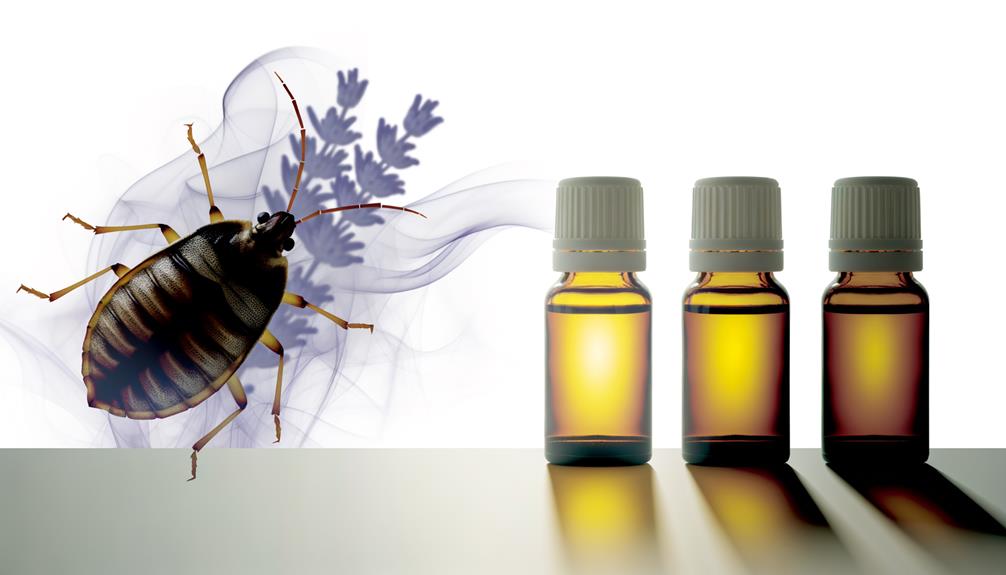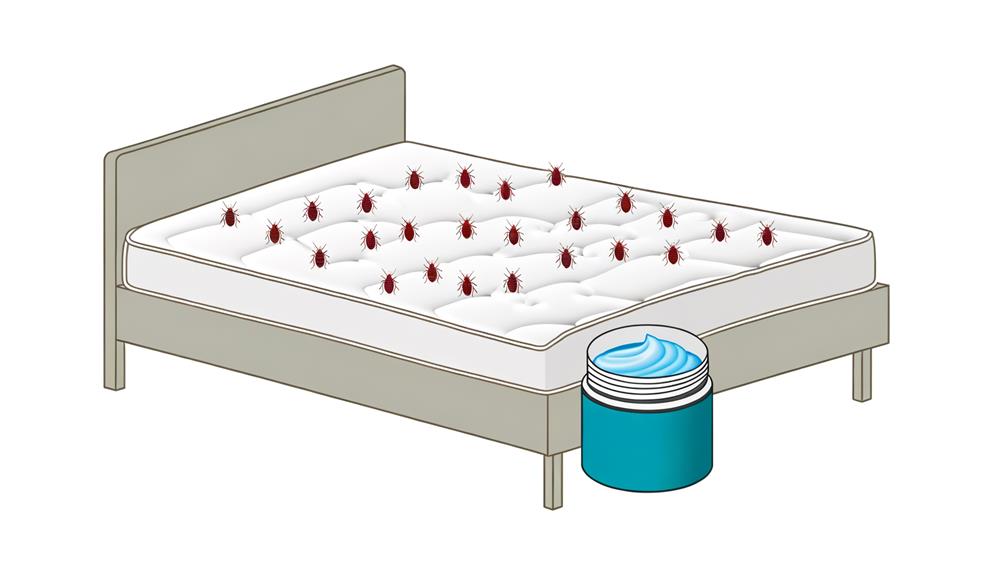Like a vampire recoils from sunlight, bed bugs have their own set of aversions that can help keep them at bay. You’re likely familiar with the discomfort and annoyance these tiny pests can cause, but did you know there are certain things bed bugs hate? From extreme temperatures that can send them running (or rather, dying) to the potent power of specific essential oils, understanding these dislikes can be your first line of defence. As we explore options like diatomaceous earth, regular vacuuming, and more, you’ll find intriguing strategies that could turn your home into a fortress against these unwelcome invaders. Why not uncover which of these methods could work best for you?
Key Takeaways
- Bed bugs hate extreme temperatures, dying at above 113°F (45°C) or below 32°F (0°C).
- Essential oils like lavender, tea tree, and eucalyptus effectively repel bed bugs.
- Diatomaceous earth is lethal to bed bugs, dehydrating them by damaging their exoskeletons.
- Isopropyl alcohol disrupts bed bugs’ shells, leading to their dehydration and death.
Extreme Temperatures

Bed bugs exhibit a significant vulnerability to extreme temperatures, a fact that underpins many eradication strategies. When you delve into the science of it, you’ll uncover that precise temperature measurement is critical in leveraging this weakness. Bed bugs, lacking sophisticated thermal adaptation mechanisms, are unable to survive when exposed to temperatures above 113°F (45°C) or below 32°F (0°C) for prolonged periods. This temperature sensitivity forms the basis of both heat treatment and freezing methods in pest control.
In a detailed examination of their thermal adaptation—or rather, the lack thereof—it’s evident that bed bugs have not evolved significant defences against extreme thermal environments. Their survival strategy primarily relies on avoiding temperature extremes by residing within human habitats, which typically offer moderate temperatures. However, this reliance also forms their Achilles’ heel in pest management. By accurately measuring and applying temperatures beyond their tolerance threshold, you can effectively disrupt their life cycle, leading to eradication.
Understanding this scientific principle not only empowers you with a method to combat bed bug infestations but also fosters a sense of belonging among those who have faced the distress of dealing with these pests. It reassures that, through knowledge and application of science, you can reclaim your living spaces.
Certain Essential Oils
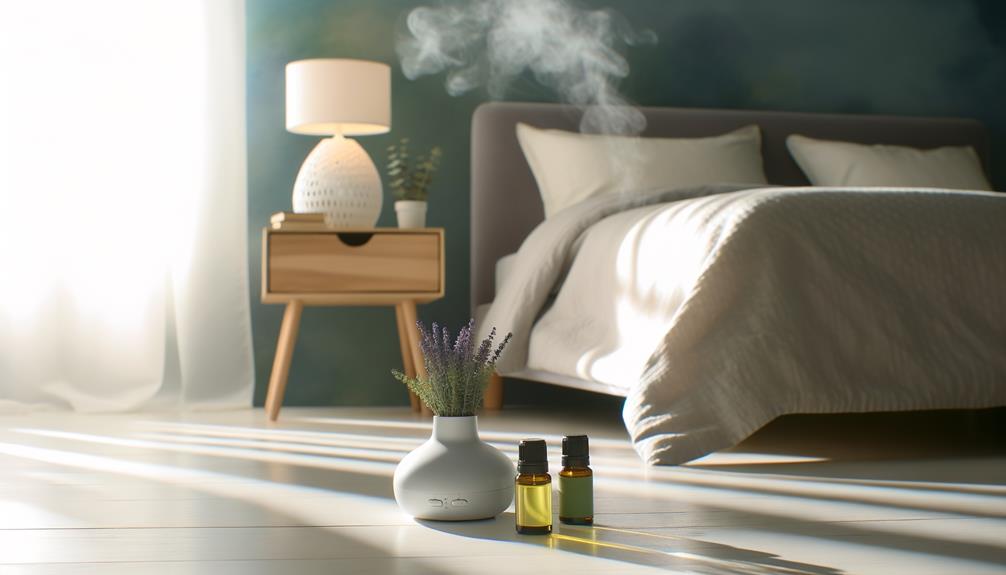
You’ll find that certain essential oils act as potent repellents against bed bugs, leveraging their natural chemical properties to disrupt the pests’ behaviour and survival. The effectiveness of these oils varies, with some, like tea tree, lavender, and eucalyptus, showing higher repellency due to their specific compounds. Understanding the correct application methods, including dilution ratios and surface treatments, is crucial for maximizing their potential while ensuring safety and efficacy.
Effective Essential Oils
Among the arsenal of natural repellents against bed bugs, certain essential oils stand out due to their proven efficacy in deterring these pests. It’s essential, however, to approach their use with an understanding of safety precautions and the principles of oil diffusion. Essential oils like lavender, tea tree, and eucalyptus have been scientifically shown to repel bed bugs, disrupting their sensory mechanisms and deterring them from inhabiting your living spaces. When diffusing these oils, it’s crucial to ensure the environment remains safe for all inhabitants, including pets. Overexposure or improper application can lead to adverse reactions. Hence, understanding the concentration levels and diffusion methods enhances the effectiveness of these oils while ensuring the safety of your home environment.
Application Methods
To effectively leverage the repellent properties of essential oils like lavender, tea tree, and eucalyptus against bed bugs, it’s crucial to master their application methods, focusing on concentration and distribution techniques within your living space. Precise spray patterns ensure comprehensive coverage, targeting the nooks and crannies where these pests thrive. It’s not just about where you apply, but when. Application timing plays a pivotal role in maximizing efficacy. Evening applications can be more effective, as bed bugs are nocturnal. Dilute the oils correctly, as too high a concentration can damage fabrics, while too low may not deter pests. Joining this fight, you’re not just protecting your space; you’re becoming part of a community dedicated to reclaiming their homes from these unwelcome invaders.
Diatomaceous Earth

Diatomaceous earth acts as a potent natural insecticide against bed bugs due to its abrasive properties that damage their exoskeletons upon contact. This natural substance, composed of fossilized remains of tiny, aquatic organisms known as diatoms, harnesses the power of silica properties to effectively combat these pests. The sharp edges of diatomaceous earth particles create microscopic cuts in the bed bugs’ exoskeletons, leading to dehydration and eventual death.
You’re part of a community that seeks to tackle bed bug infestations without resorting to harsh chemical insecticides. Understanding the mechanics of how diatomaceous earth works provides you with an effective tool in your pest control arsenal. However, it’s crucial to consider the health risks associated with its misuse. Inhalation of diatomaceous earth can pose respiratory issues, so it’s essential to use food-grade products and apply them carefully, avoiding areas with high human activity.
Vacuuming Regularly
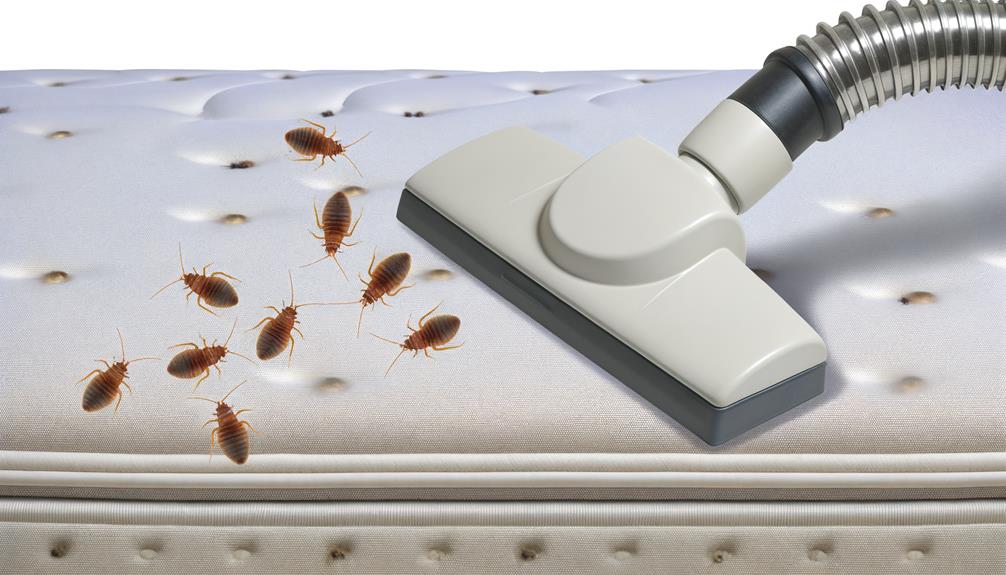
While diatomaceous earth serves as a potent tool against bed bugs, integrating vacuuming regularly into your pest control strategy enhances effectiveness by physically removing both bugs and eggs from your environment. This method doesn’t just aim at the superficial removal of these pests but delves deeper, targeting the hidden crevices and fabric folds that serve as their breeding grounds. Regular vacuuming disrupts the life cycle of bed bugs by extracting them from their secure hideouts, thereby reducing their chances of multiplying.
Moreover, the act of vacuuming plays a dual role in maintaining a healthy living space. It significantly reduces dust accumulation, a common irritant for individuals with allergies or respiratory issues. The removal of dust and potential allergens works hand in hand with bed bug control, creating an environment less hospitable to pests and more conducive to allergy reduction. This dual-action approach not only aims at eradicating bed bugs but also contributes to a cleaner, healthier home environment.
Encasement Strategies
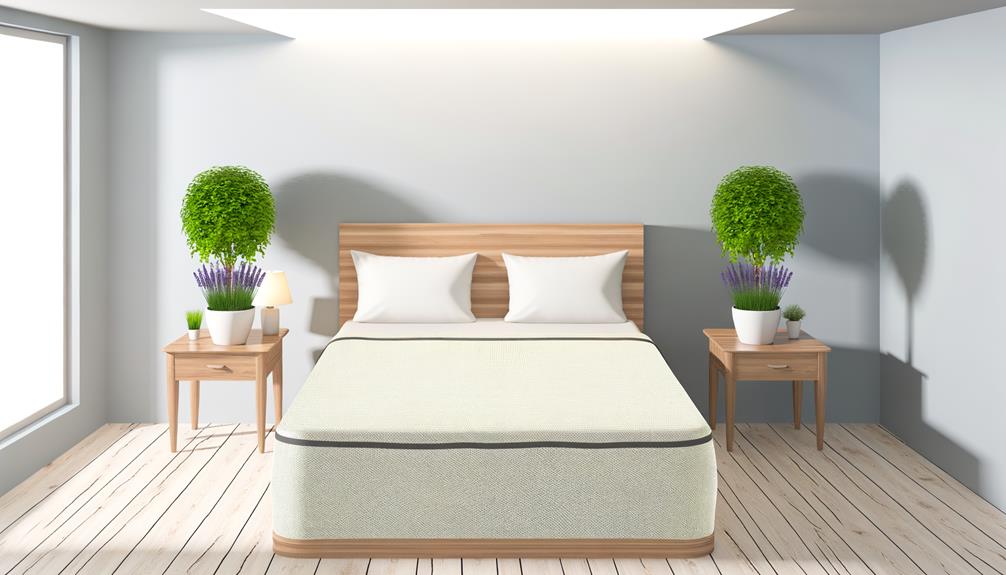
You must carefully select encasements designed to thwart bed bugs, as their efficiency hinges on the material’s ability to resist penetration and ensure a snug fit. Proper installation techniques are crucial, ensuring no gaps or loose ends where bed bugs might enter or escape. Regular maintenance and vigilant monitoring form the cornerstone of this strategy, allowing for early detection and intervention to prevent infestations.
Choosing Effective Encasements
Selecting the right encasements is crucial for effectively isolating bed bugs and preventing their access to sleeping areas. Material selection and zipper security are paramount. You’ll want to opt for encasements made from tightly woven fabrics, which bed bugs can’t penetrate. Scientific evaluation suggests materials like microfiber offer superior protection due to their intricate weaving.
Equally important is zipper security. A bedbug-proof zipper is designed to leave no gap large enough for even the smallest of bed bugs to squeeze through. Look for zippers that seal completely, often termed as “bug-lock” or “secure seal” technology. These features ensure that once encased, your mattress and pillows become impenetrable fortresses, denying bed bugs the warm, blood-rich environment they crave. Integrating these considerations fosters a sense of security, belonging to a community free from the worry of bed bug infestations.
Installation Best Practices
Proper installation of bed bug encasements involves meticulous attention to detail, ensuring no potential entry points are overlooked. To mitigate installation errors, it’s crucial to follow a systematic approach. Begin by carefully inspecting the encasement for defects. Any imperfection could serve as a gateway for bed bugs. Next, align the encasement with the mattress or box spring, ensuring a snug fit. Avoid rushing this step, as improper alignment can lead to gaps. Secure the zipper, confirming it’s fully closed and locked if equipped with a locking mechanism. Considering the complexity and the high stakes of correct installation, seeking professional consultation is advisable. Experts can provide insights and techniques that might not be immediately apparent, fostering a sense of community and support in your fight against bed bugs.
Maintenance and Monitoring
Maintaining bed bug encasements requires regular inspection to ensure their integrity and effectiveness in deterring infestation. It’s crucial to examine them for any signs of wear or tear that could compromise their barrier against these pests. Should any damage be discovered, immediate action is necessary to repair or replace the compromised encasement. This proactive approach not only prevents bed bugs from gaining access to your sleeping area but also significantly reduces the likelihood of an infestation becoming established.
Moreover, integrating chemical treatments, under the guidance of professional exterminators, into your maintenance routine can offer an additional layer of protection. These experts can apply targeted solutions that discourage bed bugs from approaching your encased mattress and box spring, effectively enhancing your defence strategy against these persistent invaders.
Isopropyl Alcohol

Isopropyl alcohol, known for its potent disinfecting properties, effectively disrupts the outer shell of bed bugs, leading to their dehydration and eventual death. This method, while potent, must be approached with caution due to the adaptive nature of bed bugs. Over time, these pests can develop chemical resistance, rendering certain treatments less effective. It’s crucial, then, to understand not just the immediate benefits but also the long-term implications of relying on isopropyl alcohol as a primary eradication method.
Moreover, you’ll need to observe strict safety precautions when applying isopropyl alcohol. Its high volatility means it’s highly flammable, posing significant risks if used carelessly, especially around open flames or heat sources. Proper ventilation is also essential to prevent inhalation of harmful fumes, which can cause respiratory issues or other health concerns.
Understanding these factors is vital for anyone seeking a sense of belonging in a community free from the nuisance of bed bugs. By considering both the scientific effectiveness of isopropyl alcohol and the necessary safety measures, you can make informed decisions that protect both your home and your health.
You may also enjoy reading this article
Was This Article Helpful?
- Please provide feedback and comments to help us improve our content.
- Share your experiences and any additional tips you have for dealing with pests.
Share this Post
